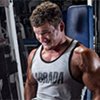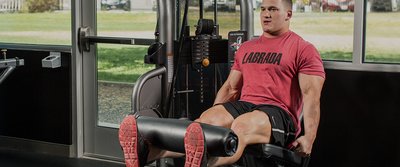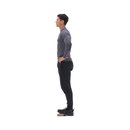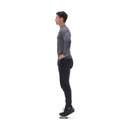If you want a balanced, complete physique, you can't ignore your lower body.
Your calves, quads, hamstrings, and glutes are just as important as your chest and arms!
If you want to build a rock-solid foundation, or you just hunger for bigger wheels, then throw this workout into your training split.
It doesn't take a lot of complicated exercises or a ton of volume to build massive legs; it just takes smart programming and hard, consistent effort.
This leg workout is one of my favorites because it doesn't take a lot of time and there are only five exercises, but it's one of the most effective leg workouts I've found.
You want massive legs? Let's go build them!
Hunter Labrada's 5 Moves To Massive Legs
Watch the video - 11:46

BodyFit
$6.99/month- 2,500+ expert-created single workouts
- 3,500+ how-to exercise videos
- Detailed workout instruction
- Step-by-step workout tips
- Training at gym or at home
- Access to Workout Plans
- Access to Bodyfit App
- Store Discounts
Already have a Bodybuilding.com account with BodyFit? Sign In

What comes with BodyFit?

- Instructional Videos
Don't risk doing a workout improperly! Avoid injury and keep your form in check with in-depth instructional videos.

- How-to Images
View our enormous library of workout photos and see exactly how each exercise should be done before you give it a shot.

- Step-by-Step Instructions
Quickly read through our step-by-step directions to ensure you're doing each workout correctly the first time, every time.
Labrada Laws
Standing Calf Raise
I know it probably seems strange to train calves before hamstrings and quads, but I like to put them first because they're a problem child for many lifters. Hitting them while you're fresh means you can put as much energy as possible into training and building them.

Standing Calf Raise
Standing calf raises train your gastrocnemius, which is your visible calf muscle. Do your best to keep your quads and glutes tight as you do the exercise, and don't bend your legs. Go for a full stretch and a full contraction.
Rise up as high as you can, pause for a second, and then try to get up a little higher to force the contraction. Stay controlled through the whole range of motion.
Seated Calf Raise
Doing calf raises with your knees bent trains the soleus, which is the muscle that lies under the gastrocnemius. Developing your soleus is important because it makes your calf muscle pop out further and look bigger.

Seated Calf Raise
Perform the same double contraction at the top of each rep. I prefer to hold the seat behind me instead of the handles so I can't cheat and my back stays nice and straight.
Leg Extension
The most important part of performing leg extensions is setting up correctly. Your knee needs to be in line with the pivot on the machine. Bring the pad forward enough to sit with your butt planted and your back flat against the pad. I don't like to lock my ankle too far behind my knee because of the pressure I feel on my knee joint. Over time, you'll find the specific spot that works best for you.

Leg Extension
As you perform each rep, keep your toes straight up and down to ensure the entire quad is completely contracted. I also like to stretch in between sets because of this exercise, because my quads get so pumped.
Paused Squat
When you hear "paused squat," don't think you have to rest forever in the hole with a heavy weight on your back. The point of the pause is to take away some of your stored energy, which only requires about a one-second pause. After you pause, explode out of the hole.

Paused Squat
Good form goes a long way in the squat. Keep a big chest and a flat lower back. Your base should be about as wide as your shoulders. Your arms should be as close to your body as possible, and the bar should be on your trap shelf. Push through your heels.
You may find that you need a little more rest between sets with this exercise. That's fine, but don't take too long. As soon as your breathing returns to normal, get back to work.
Cable SLDL
For balanced leg development, you have to have great hamstrings to go with your quads, so it's important to train them just as hard as you do the rest of your legs.
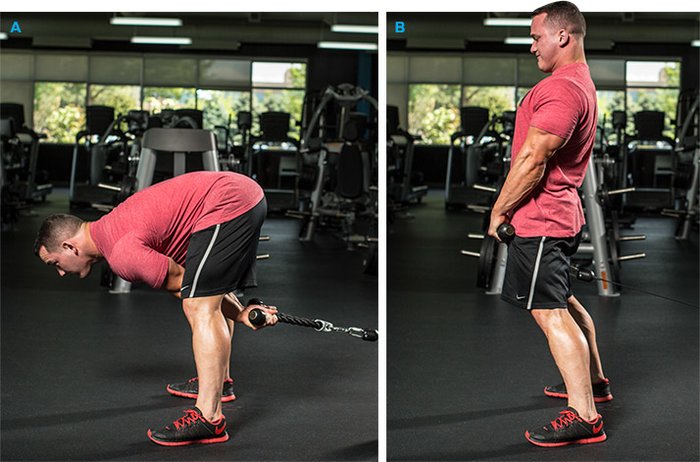
Cable Stiff-legged Deadlift
I like to use cables instead of a barbell or dumbbells here because it takes some stress off your lower back and allows you to keep constant tension on your hamstrings and glutes. Don't use your back to perform this movement. Drive your hips back and then drive them forward. Using your hips will recruit those powerful posterior chain muscles.
* These statements have not been evaluated by the Food and Drug Administration. This product is not intended to diagnose, treat, cure, or prevent any disease.
